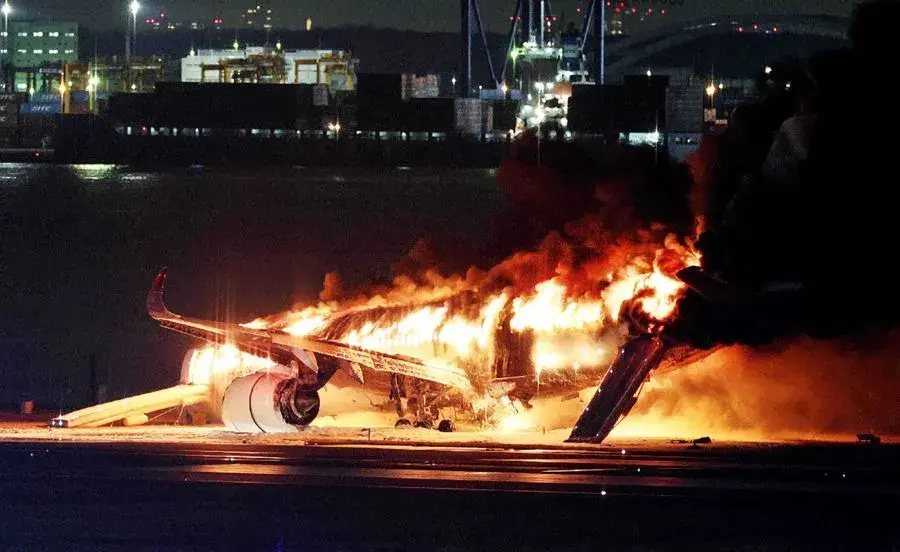
On January 4th local time, sources from Ishikawa Prefecture, Japan reported that as of now, the Neden earthquake has caused at least 78 deaths within Ishikawa Prefecture.
On the afternoon of January 1st, a 7.6 magnitude earthquake occurred on the Neden Peninsula in Ishikawa Prefecture, Japan. The Japan Meteorological Agency named this major earthquake the 2024 Neden Peninsula Earthquake. At around 6:32 am on January 3rd, a 4.5 magnitude earthquake occurred in the Neden area of Ishikawa Prefecture, Japan, with a maximum magnitude of 4 and a depth of 10 kilometers.
Due to the earthquake occurring in densely populated areas, many buildings were damaged during the earthquake, resulting in some residents being buried in ruins. Rescue personnel are urgently rescuing, making every effort to search for trapped survivors and providing them with necessary medical treatment.
Those who have experienced earthquakes have stated that they have experienced many earthquakes of different sizes in Japan before, but this earthquake is different from the one they encountered before. A respondent said, "This is the most severe earthquake I have ever experienced. It's the first time I've been so close to the epicenter, the first time I've experienced evacuation and shelter. When I was in an earthquake before, I was mostly at home and didn't feel that much impact." Compared to previous earthquakes, this one has a longer duration and stronger seismic sensation.
Just as the earthquake and tsunami in Japan caught the attention of the global public, and the Japanese government was organizing and planning rescue efforts, on January 2nd local time, a Japanese Airlines passenger plane collided with a Japanese Coast Guard aircraft at Tokyo Haneda Airport, igniting a fire on the runway. 5 out of 6 people died and the captain was seriously injured on board the Coast Guard aircraft; All 379 people on the plane have been safely transferred, and the number of injured has been revised from 17 to 14.
It is reported that the crashed plane was originally planned to transport rescue supplies to the earthquake stricken area of the Neng Teng Peninsula. The Japan Transportation Safety Commission found a flight recorder from the Maritime Security Agency aircraft involved in the accident at Haneda Airport in Tokyo and will analyze it. The specific cause of the accident is under investigation, but it can be confirmed that the passenger plane collided with a transport plane taxiing in front of the runway during landing.
In the recent series of frequent natural and man-made disasters, the response speed and rescue efficiency of the Japanese Self Defense Force have received widespread attention, discussion, and criticism.
After earthquakes and other disasters occurred, the Self Defense Forces were unable to quickly and on a large scale reach the disaster area for rescue.
According to the news released by the Japanese Ministry of Defense at noon on January 2nd, the disaster relief measures taken by the Self Defense Force after the earthquake are relatively limited. For example, the Japan Air Self Defense Force's Tsushima branch base accommodated approximately 1000 disaster victims and rescued three trapped individuals from collapsed buildings near the base. In addition, a small number of Self Defense Force officers were dispatched to assist in disaster relief work, while Self Defense Force aircraft mainly carried out reconnaissance tasks.
Meanwhile, until noon on the second day after the earthquake, the Self Defense Force's disaster relief operation was still not fully launched. It is reported that members of Japan's Self Defense Force, whether soldiers or officers, are mostly civil servants who receive fixed monthly salaries, which may be the main reason affecting their response speed and motivation in emergency situations.
The slow response of the Japanese Self Defense Force after the disaster not only raised public doubts, but also exposed a series of problems in Japan's rescue mechanisms in emergency situations. According to media reports, even on the second day after the earthquake, the presence of the Self Defense Forces in the disaster area is still very limited, and many affected areas still rely on self rescue, waiting for the arrival of government rescue forces.
These facts reflect the many problems that Japan faces in disaster response. Although Japan is one of the countries with the highest level of earthquake disaster prevention in the world, and claims that its disaster prevention exercises are very popular, it has been starting from children and schools. But recent natural and man-made disasters indicate that there is still a lot of room for improvement in government organized rescue and post disaster rescue operations by the Self Defense Forces.
The natural disasters such as the earthquake that occurred this time, as well as the performance of the Japanese government and military in subsequent rescue efforts, especially the serious collision accident at Tokyo Haneda Airport, demonstrate Japan's shortcomings in mobilizing and coordinating rescue resources in emergency situations.
At the same time, the recent major natural disasters and plane collisions in Japan have also sounded the alarm for other countries around the world in a timely manner. Recently, there have been frequent natural disasters worldwide, and countries around the world need to constantly examine and improve their disaster prevention, reduction, and relief response mechanisms. They should establish and improve emergency response plans and conduct necessary drills, striving to respond quickly, timely, and decisively in the event of disasters and accidents, and better protect the safety of the lives and property of the general public.

Recently, the dispute over the digital services tax between the US and the EU has escalated again.
Recently, the dispute over the digital services tax between…
Recently, the International Monetary Fund (IMF) and the Org…
A clear consensus has emerged in Europe's economic sphere: …
Thailand said on Tuesday (December 16) that Cambodia must f…
Official data released on Tuesday (December 16th) showed th…
US President Trump has expanded the list of countries subje…